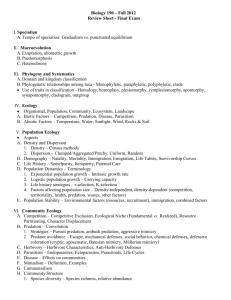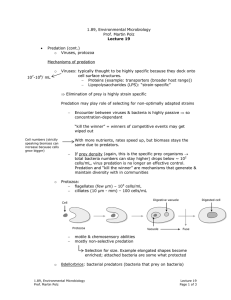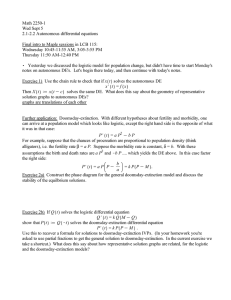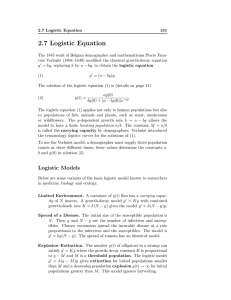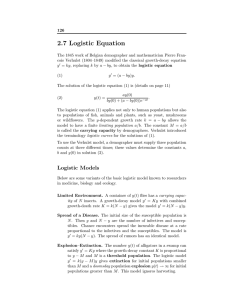Logistic Growth
advertisement
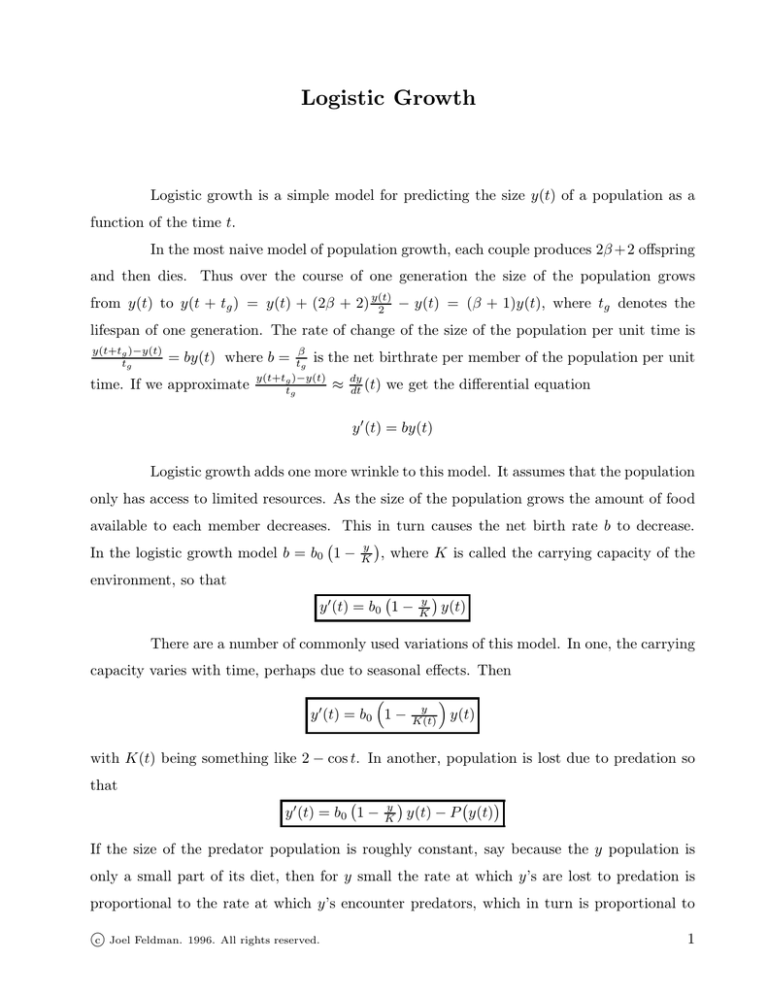
Logistic Growth Logistic growth is a simple model for predicting the size y(t) of a population as a function of the time t. In the most naive model of population growth, each couple produces 2β +2 offspring and then dies. Thus over the course of one generation the size of the population grows − y(t) = (β + 1)y(t), where tg denotes the from y(t) to y(t + tg ) = y(t) + (2β + 2) y(t) 2 lifespan of one generation. The rate of change of the size of the population per unit time is y(t+tg )−y(t) tg β tg is the net birthrate per member of the population y(t+tg )−y(t) ≈ dy (t) we get the differential equation tg dt = by(t) where b = time. If we approximate per unit y ′ (t) = by(t) Logistic growth adds one more wrinkle to this model. It assumes that the population only has access to limited resources. As the size of the population grows the amount of food available to each member decreases. This in turn causes the net birth rate b to decrease. y In the logistic growth model b = b0 1 − K , where K is called the carrying capacity of the environment, so that y ′ (t) = b0 1 − y K y(t) There are a number of commonly used variations of this model. In one, the carrying capacity varies with time, perhaps due to seasonal effects. Then y ′ (t) = b0 1 − y K(t) y(t) with K(t) being something like 2 − cos t. In another, population is lost due to predation so that y ′ (t) = b0 1 − y K y(t) − P y(t) If the size of the predator population is roughly constant, say because the y population is only a small part of its diet, then for y small the rate at which y’s are lost to predation is proportional to the rate at which y’s encounter predators, which in turn is proportional to c Joel Feldman. 1996. All rights reserved. 1 y(t). When y is large the rate at which y’s are lost to predation becomes a constant because the predators don’t want to eat any more y’s. A predation function which has this behaviour is P (y) = c Joel Feldman. 1996. All rights reserved. αy 1+γy 2






